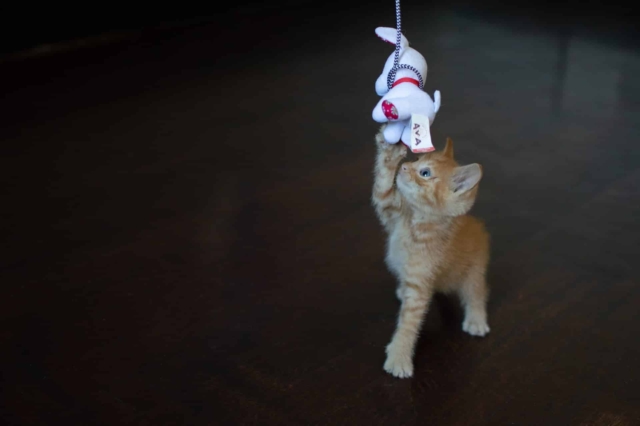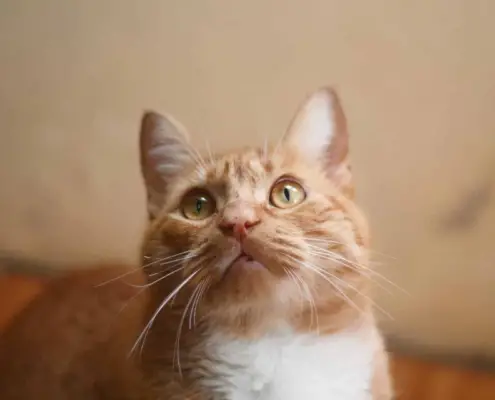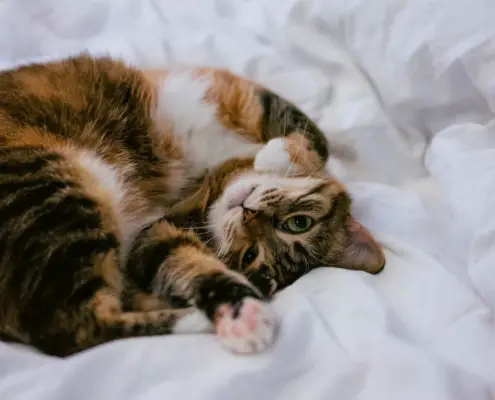
Cats may be known for their independent nature, but just like humans, they need regular exercise to stay healthy and happy. Exercise not only helps cats maintain a healthy weight, but it also benefits their mental and physical well-being. Regular physical activity can reduce the risk of obesity, diabetes, and other common health issues in cats. Additionally, exercise provides an outlet for their natural instincts to hunt, climb, and play. It keeps their muscles strong, joints flexible, and helps prevent boredom and destructive behavior. So, if you want to ensure your feline friend’s overall well-being, incorporating cat exercises into their routine is essential.
Common health issues caused by lack of exercise
A sedentary lifestyle can have detrimental effects on a cat’s health. One of the most common issues caused by a lack of exercise is obesity. Overweight cats are at higher risk for various health problems, including diabetes, heart disease, and joint issues. Lack of exercise can also lead to muscle weakness and stiffness, which can affect a cat’s mobility and overall quality of life. Additionally, cats who don’t engage in regular physical activity are more prone to behavioral problems such as aggression, excessive meowing, and scratching furniture. Therefore, it’s crucial to recognize the signs of a sedentary lifestyle and take proactive measures to prevent these health issues.
Types of cat exercises
When it comes to exercising your cat, there are various options to choose from. Different types of exercises cater to different aspects of a cat’s physical and mental well-being. Some common cat exercises include:
1. Playtime with interactive toys
Interactive toys, such as feather wands, laser pointers, and treat-dispensing puzzles, can provide mental stimulation and encourage exercise. These toys mimic the movements of prey and tap into a cat’s natural hunting instincts, keeping them engaged and active.
2. Indoor agility courses
Indoor agility courses consist of tunnels, ramps, and obstacles that challenge a cat’s agility and coordination. They provide a fun and engaging way for your cat to exercise while indoors. You can easily create a DIY agility course using household items or purchase ready-made ones.
3. Catnip-filled toys
Catnip-filled toys can be a great way to entice your cat to play and exercise. Catnip stimulates their senses and encourages them to engage in physical activity. These toys can be especially helpful for sedentary cats who may need a little extra motivation to get moving.
Indoor exercises for cats
If your cat is primarily an indoor pet, there are plenty of exercises you can incorporate into their daily routine to keep them active and entertained.
1. Laser chase
Using a laser pointer, create a moving light for your cat to chase. This exercise not only provides mental stimulation but also engages their natural predatory instincts. Remember to always end the game with a physical toy or treat to prevent frustration.
2. Feather wand play
A feather wand is a fantastic interactive toy that can keep your cat entertained for hours. Wiggle the feather wand around, mimicking the movements of a bird or insect, and let your cat pounce and chase it. This exercise helps improve their reflexes and coordination.
3. Vertical scratching posts and climbing trees
Cats love to climb and scratch, so providing them with vertical scratching posts and climbing trees can encourage exercise. These structures allow them to stretch their muscles, strengthen their claws, and explore their surroundings from a higher vantage point.
Outdoor exercises for cats
If your cat has access to the outdoors, there are additional exercises and activities they can enjoy in a safe and supervised environment.
1. Harness training and leash walks
Training your cat to wear a harness and walk on a leash can open up a whole new world of outdoor exploration. It allows them to experience new sights, sounds, and smells while providing exercise. Start with short walks in quiet areas and gradually increase the duration and complexity of the walks.
2. Enclosed outdoor play areas
If you have a yard or access to an enclosed outdoor space, consider creating a cat-friendly play area. Install fences or use cat enclosures to create a safe environment where your cat can roam, climb, and play. This gives them the freedom to enjoy the outdoors while minimizing the risks of encountering hazards or getting lost.
3. Nature-inspired toys and puzzles
When outdoors, provide your cat with toys that mimic nature, such as toy mice or balls. These toys can be tossed or rolled, encouraging your cat to chase and pounce on them. Additionally, consider hiding treats or toys in the outdoor environment to stimulate their natural hunting instincts.
Incorporating playtime into your cat’s exercise routine
In addition to structured exercises, incorporating regular playtime into your cat’s routine is essential for their overall well-being. Play sessions provide mental stimulation and strengthen the bond between you and your feline friend. Here are some tips to make playtime enjoyable for both you and your cat:
1. Set a consistent schedule
Establish a consistent playtime schedule that suits both you and your cat. Cats thrive on routine, so having a designated playtime each day helps them anticipate and look forward to the activity. Aim for at least two play sessions of 15-20 minutes each day.
2. Use positive reinforcement
Reward your cat with treats, praise, or their favorite toys during and after playtime. Positive reinforcement helps create positive associations with exercise and encourages them to engage in future play sessions.
3. Rotate toys
To keep playtime exciting and prevent boredom, rotate your cat’s toys regularly. Introduce new toys or bring out old ones that have been hidden away for a while. This novelty keeps them engaged and interested in playtime.
Cat toys and equipment for exercise
Having the right toys and equipment can enhance your cat’s exercise routine and make playtime more enjoyable. Here are some cat toys and equipment to consider:
1. Interactive treat puzzles
Interactive treat puzzles challenge your cat to work for their treats. These puzzles stimulate their problem-solving skills while providing physical activity. They come in various designs, including puzzle feeders and treat-dispensing balls.
2. Feather wands and teaser toys
Feather wands and teaser toys are excellent for interactive play sessions. They allow you to mimic the movements of prey, encouraging your cat to chase, pounce, and engage in exercise. These toys come in different styles, including feather wands, fishing rod toys, and dangling toys.
3. Scratching posts and climbing trees
Scratching posts and climbing trees provide an outlet for your cat’s natural instinct to scratch and climb. They help keep their claws healthy and provide opportunities for exercise. Look for sturdy and tall scratching posts or invest in a multi-level cat tree for climbing and exploration.
Tips for encouraging your cat to exercise
While some cats are naturally active, others may need a little encouragement to engage in exercise. Here are some tips to help you motivate and encourage your cat to exercise:
1. Start slow and gradually increase intensity
If your cat is not used to exercise, start with short play sessions and gradually increase the duration and intensity. Cats may need time to build up their stamina, so be patient and allow them to progress at their own pace.
2. Make it fun and engaging
Find activities that your cat enjoys and tailor the exercises to their preferences. Some cats may prefer chasing toys, while others may enjoy climbing or hunting. By catering to their individual preferences, you can make exercise sessions more enjoyable for them.
3. Use positive reinforcement
Reward your cat with treats, praise, or playtime after exercise sessions. Positive reinforcement helps create positive associations with exercise, making them more likely to engage in future activities.
Creating a cat-friendly exercise environment
Creating a cat-friendly exercise environment involves ensuring that your home is safe and stimulating for your feline friend. Here are some steps you can take to create an ideal exercise environment for your cat:
1. Remove hazards
Identify and remove any potential hazards or toxic substances that could harm your cat during exercise. Secure loose wires, keep toxic plants out of reach, and ensure that windows and balconies are cat-proofed.
2. Provide vertical spaces
Cats love to climb and perch on high surfaces. Install shelves, cat trees, or window perches to provide vertical spaces for your cat to explore. These spaces not only promote exercise but also allow your cat to observe their surroundings from a safe vantage point.
3. Create hiding spots and tunnels
Cats enjoy hiding and stalking their prey. Create hiding spots and tunnels using boxes, blankets, or specialized cat tunnels. These spaces encourage exercise and provide mental stimulation for your cat.
Conclusion
Regular exercise is crucial for maintaining your cat’s overall health and well-being. It not only helps prevent obesity and common health issues but also provides mental stimulation and prevents behavioral problems. By incorporating a variety of exercises, both indoors and outdoors, you can keep your feline friend active, happy, and healthy. Remember to make playtime enjoyable, use positive reinforcement, and create a cat-friendly exercise environment to ensure the best possible outcome for your cat’s exercise routine. So, let the games begin and enjoy the bond you create with your feline friend through regular exercise!
If you enjoyed my article, I would appreciate you sharing it with your network.

Sima Ndlebe
Sima writes for CatBuzz. He is interested in Cats, Health and Fitness, and Entrepreneurship.
Published: 13 October 2023
Related Articles
Disclaimer
The content found on CatBuzz.org is presented on an "as is" basis and is intended for general consumer information and education purposes only. Any utilization of this information is voluntary and solely at the user's own risk.
None of the articles or content should be regarded as, or used in place of, veterinary medical advice, diagnosis, or treatment. The information provided on the website is purely for educational and informational intentions and should not be considered a substitute for professional guidance from a veterinarian or other qualified expert. The articles are designed to inform consumers about veterinary healthcare and medical matters that may impact their cat's daily life. It should be noted that this website and its services do not constitute the practice of any form of veterinary medical advice, diagnosis, or treatment. CatBuzz.org explicitly disclaims any liability for any direct or indirect damages or losses that may arise from the use of or reliance on the information contained within the content.
Consumers must consult a veterinarian, veterinary specialist, or another qualified veterinary healthcare provider when seeking advice regarding their cat's health or medical conditions. It is important not to ignore, avoid, or postpone seeking medical advice from a veterinarian or other qualified veterinary healthcare provider solely based on information obtained from this website. If you believe that your cat may be experiencing a medical issue or condition, it is imperative to promptly contact a qualified veterinary healthcare professional.



